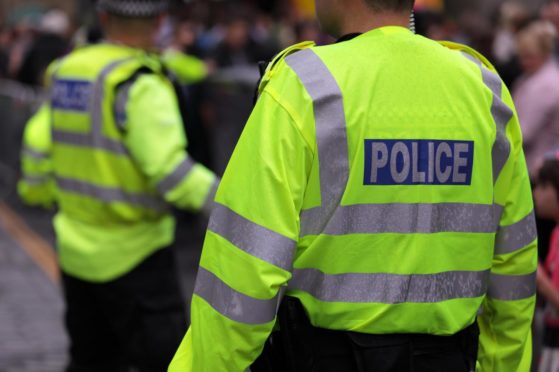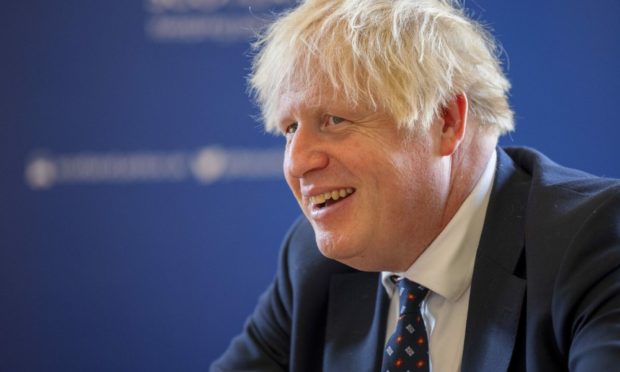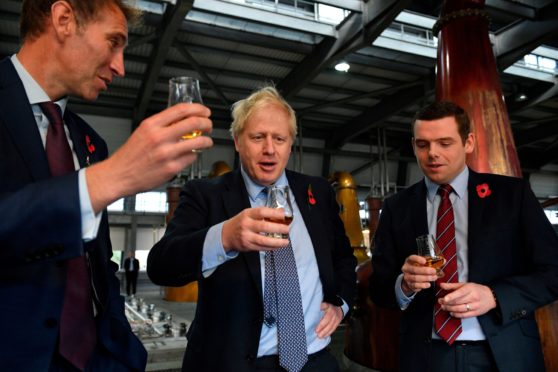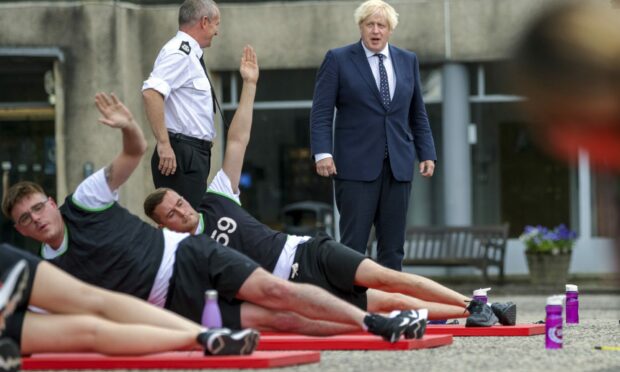The Prime Minister’s latest sojourn to Scotland has not been his strangest, but was still what we have come to expect from Mr Johnson, two years into his premiership.
Police Scotland HQ, Tulliallan, sits in a quiet corner of the country, tucked along the borders of Fife and Clackmannanshire councils, with an Alloa dialling code and Falkirk postal address.
Not quite the impenetrable fortress of RAF Lossiemouth or Faslane naval base — previously graced with the prime minister’s presence — it nevertheless rings with a theme of a prime minister happy to be sheltered from view.
The residents of nearby Kincardine seemed pretty-much oblivious to Mr Johnson’s visit and had little to say in favour or against it, the only tell-tale signs of his being there were the cameras and film crews (not given access to Tulliallan, like 99% of the Scottish media), littering the streets asking for opinions.
A transcription of the one interview granted to press on Wednesday shows Mr Johnson did not even pretend to entertain why, having previously promised “wild horses would not keep him away”, he did not visit ahead of the Holyrood election in May.
A number of Tories, ahead of the vote, privately worried about the impact the prime minister would have on their chances, yet in the end it seems the answer is “very little”.
Douglas Ross’ party retained the exact same number of seats Ruth Davidson won in 2016 (31) and the SNP were again denied an outright majority (but did win the most seats).
As far as the Scottish Conservatives are concerned, there is no “majority” in parliament for a second referendum.
Is the fear of Boris Johnson then, one which is overestimated? Could he be, if not quite electoral gold, at least not quite as toxic as once feared?
Or, did Mr Ross and his tartan cohort do enough to distance themselves from Mr Johnson, Dominic Cummings and the fall-out of Brexit to avoid disaster?
Either way, it is a string of questions which for just now will remain unanswered, as long as the prime minister remains unavailable for questions.
COP 26
The delayed Cop 26 conference in Glasgow this November is a UK Government operation.
But, through the prism of devolution, complications arise around the organisation and execution of an event expected to require around 10,000 police officers a day.
Speaking from Tulliallan, mingling with recruits taking part in callisthenic exercises (or so the few pictures taken from the event show us) Mr Johnson promised the UK and Scottish Governments were working together to make sure policing “takes place normally” during the thirteen day climate change conference.
Mr Johnson has promised “all the money that is needed” will be given to fund the thousands of officers required to police the global festival, but how this will be delivered still needs clarification.
The eyes of the world will be focussed on Glasgow, between now and the end of the conference.
Recent events in Scottish and UK policing have not exactly soothed the public mood, between the near-riots witnessed in George Square following the Rangers title victory and the ugly scenes witnessed at the vigil for Sarah Everard — the woman raped and murdered by a Metropolitan Police Officer.
Two examples where people thought the reaction was heavy handed, or not enough had been done.
World leaders attending Cop 26 will attract protest, not just from Scotland and the UK but further afield, of which they will have a right to do and is something expected and planned for by Scotland’s top officers.
It will be the largest global event to take place in the post-lockdown world.

Police attending will need the complete support of both governments, for finance and infrastructure.
It is in Scotland and the UK’s interest, in the “sunlit uplands” of Brexit Britain, to make sure when the global gaze sits upon us, we are nothing but a shining beacon of democracy and a pillar of safety in an increasingly fractured world.


